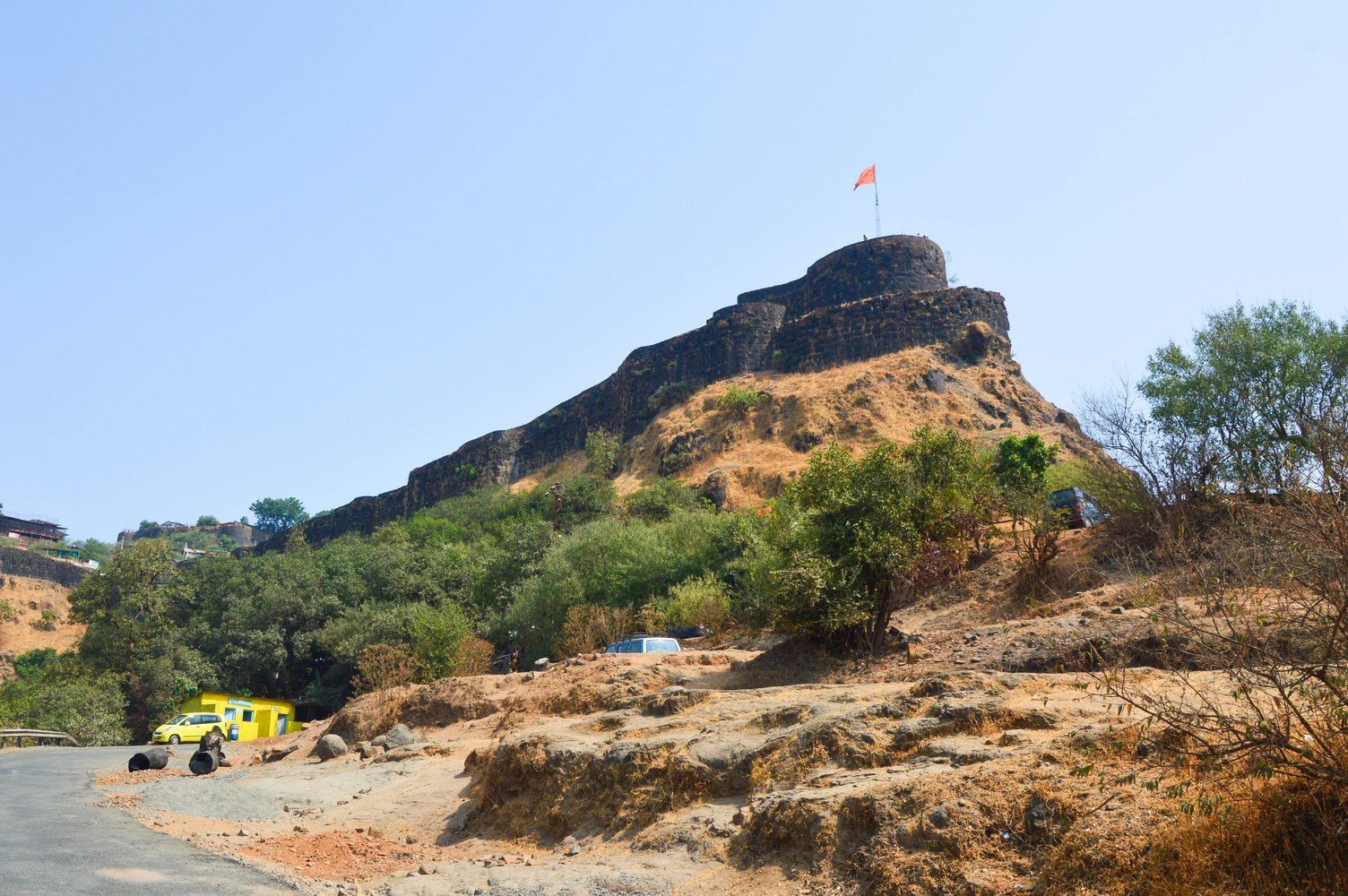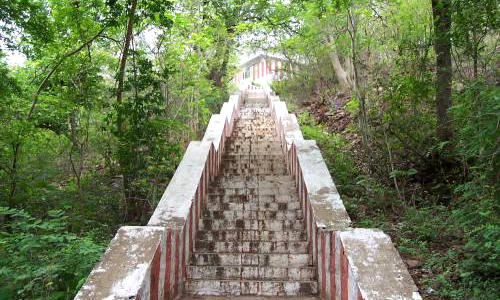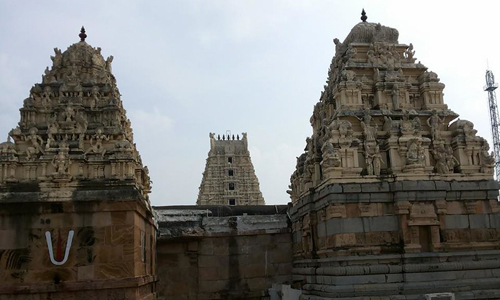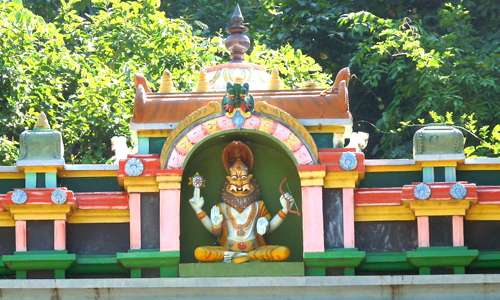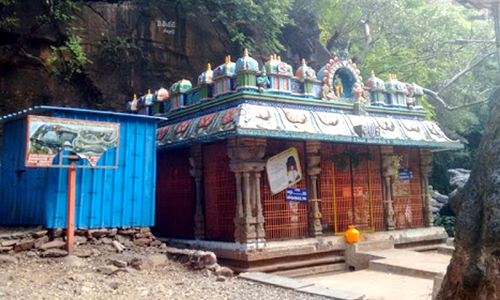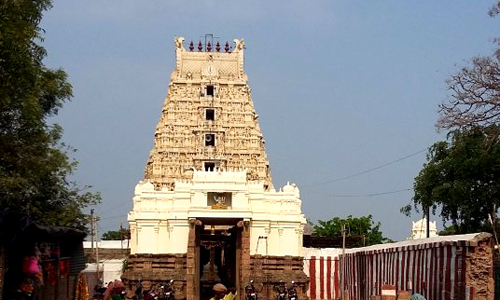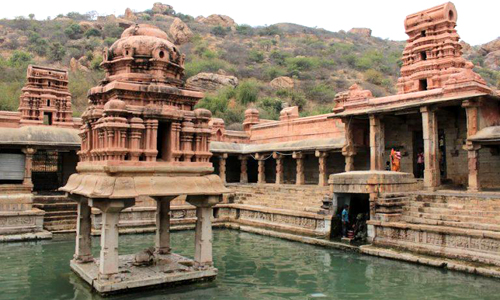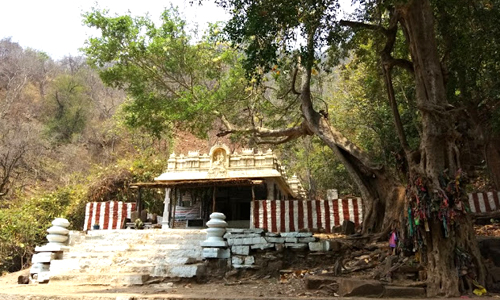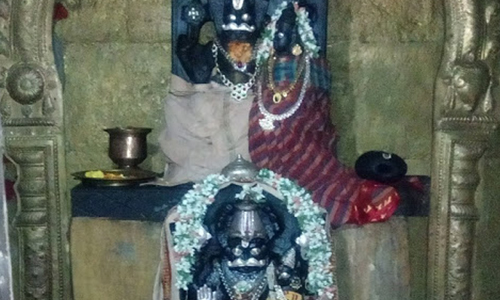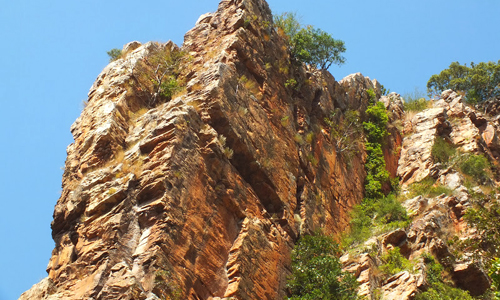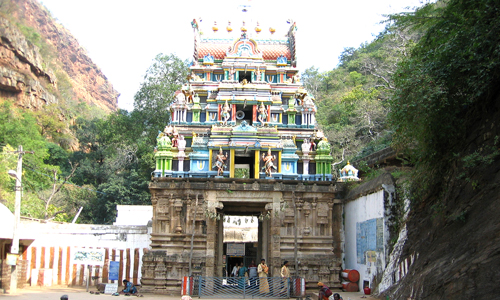The Jwala Narasimha Swamy Temple is a Hindu temple in Ahobilam, Andhra Pradesh, that is for Lord Vishnu. There are nine Narasimha temples in Ahobilam, Andhra Pradesh. It is one of them. Further up in the upper Ahobilam, on a hill called "Achala Chaya Meru," is the temple of Jwala Narasimha Swamy. The temple is one of the best places to visit in Ahobilam.
The meaning of the word Jwala is flame. Nrusimha got mad and climbed to the top of the hill. He washed his hands in the Ratna Kundam, which is close to the mountain, to get rid of the blood. People on the way might notice that the pond's water is red. The colour of the water returns to its natural state after their hands touch it.
What is the story of Jwala Narasimha?
People think that Ahobilam as a whole was actually Hiranyakasipu's house and that Lord Narasimha killed the demon where the temple used to be.
It is said that Lord Narasimha washed his hands in the Rakta Kundam after killing the monster Hiranyakasipu. Take note that the water still looks red.
What is the science behind the Jwala Devi Temple?
The Himalayan Spring that comes out near the shrine has a small amount of natural gas in it, which makes the water look like it is on fire. Both Buddhists and Hindus place a significant amount of importance on the Jwala Devi temple. The temple is also popular as the Jwala Mai temple. The temple is a must to visit during the Ahobilam tour package.
Architecture
The word Jwala means flame, and Nrusimha got mad and climbed to the top of the hill. He washed his hands in the Ratna Kundam, which is close to the mountain, to get rid of the blood. The colour of the water returns to its usual state once it is in their hands.
Statues fight over Hiranyakashipu and Nrusimha. Nrusimha comes down from a pillar, with Prahlada and Hiranyakasipa standing on either side and Lord Vishnu in the Darshan pose. In Karthika, worshipping with a lamp filled with ghee is thought to bring good luck.
Path to the temple
Getting here is hard, and pilgrims need to use the long hand stick to help them on their way. People can use the steps from Malola Narasimha Shrine to get to the Shrine. But it is possible to go back to Krodhakara Narasimha Temple and keep going to Jwala Nrusimha.
It is where the Bhavanashani waterfall is. The path to Jwala Nrusimha is small, and only two people will be able to pass through it. Older people who aren't healthy should finish their trip in a dolly.


